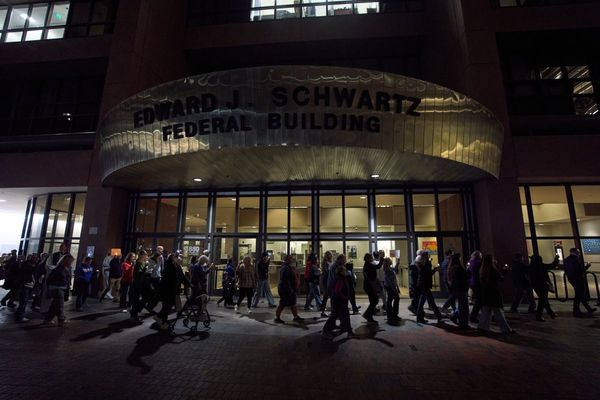
In the competitive race to attract and retain top talent, companies are constantly rolling out new and exciting workplace incentives. From free food to unlimited vacation, these perks are designed to boost morale, motivation, and, ultimately, productivity. However, some of the most popular and well-intentioned strategies can have the opposite effect, creating toxic environments and diminishing performance over time. What looks good on a job description can sometimes mask a policy that inadvertently demotivates employees and stifles collaboration. Here are nine common workplace incentives that may be doing more harm than good to your company’s long-term success.
1. Individual Performance Bonuses
Rewarding individual achievement seems like a cornerstone of good management, but it can quickly backfire. When employees are pitted against each other for a limited pool of bonus money, collaboration dies. Team members may start hoarding information, refusing to help colleagues, and focusing only on tasks that directly impact their personal metrics. This “what’s in it for me?” attitude erodes company culture and prevents the kind of teamwork needed for complex problem-solving. True innovation comes from shared success, not a collection of individual victories.
2. Perfect Attendance Awards
This incentive is a relic from a bygone era that has surprisingly stuck around. Rewarding perfect attendance sounds like a way to encourage reliability, but in reality, it encourages “presenteeism.” This means sick employees will drag themselves into the office to avoid breaking their streak, spreading germs and infecting their colleagues. Their productivity is low because they feel unwell, and they cause a ripple effect of illness that leads to more sick days across the team. These kinds of workplace incentives prioritize physical presence over genuine health and well-being.
3. ‘Employee of the Month’ Programs
While intended to recognize hard work, “Employee of the Month” awards are often perceived as arbitrary and political. With only one winner, these programs can leave the rest of the hardworking team feeling overlooked and unappreciated. The criteria for winning are often vague, leading to suspicions of favoritism and creating resentment among peers. This can demotivate the very people it’s meant to inspire, as they see the same few faces cycling through the award. Consistent, specific, and private feedback is a far more effective motivator for the entire team.
4. Unlimited Vacation Policies
Unlimited paid time off (PTO) is one of the trendiest workplace incentives, but studies show it can lead to employees taking *less* vacation. Without a set number of days to use, there’s no benchmark for what’s appropriate, creating ambiguity and social pressure. Employees may worry that taking too much time off will make them look less dedicated than their peers, leading to burnout. A mandatory minimum vacation policy is often more effective at ensuring people actually rest and recharge. This perk can quickly become a psychological trap rather than a genuine benefit.
5. High-Stakes Sales Contests
Sales teams thrive on competition, but contests with one huge prize for the top performer can be incredibly destructive. They motivate the handful of people at the top while actively demotivating everyone else who feels they have no chance of winning. This can lead to desperate, short-sighted behaviors to close deals, such as over-promising or offering unsustainable discounts that hurt the company long-term. Better workplace incentives involve tiered rewards that recognize a wider range of achievements, keeping more of the team engaged and striving for success.
6. Free Lunch Every Day
Providing free lunch seems like an unbeatable perk, saving employees time and money. However, it can unintentionally decrease movement and cross-departmental interaction. When everyone eats at their desk or in the same cafeteria, the natural opportunities to leave the office, clear one’s head, and bump into colleagues from other teams diminish. This can stifle the spontaneous conversations that often lead to creative ideas and stronger company-wide relationships. While a great perk, it should be balanced with encouragement to get out and about.
7. Complex Commission Structures
Commission plans are powerful workplace incentives, but they must be simple and clear to be effective. When a structure is too complex, with confusing tiers, clawbacks, and accelerators, salespeople may not understand how their actions translate to earnings. This confusion can lead to them optimizing for the wrong behaviors or, worse, feeling cheated by a system they can’t decipher. A straightforward commission plan that is easily understood allows the sales team to focus on selling, not on trying to game a convoluted system.
8. Stock Options with Long Vesting Periods
Granting employees ownership in the company is a great way to align interests, but stock options with long vesting schedules (e.g., four or five years) often fail as a short-term motivator. The reward feels too distant and abstract to influence an employee’s day-to-day effort and productivity. While valuable for retention, they don’t provide the immediate feedback needed to energize a team for a quarterly goal. Shorter-term, more tangible rewards are often more effective at driving immediate performance, while stock options serve a different, longer-term purpose.
9. Mandatory Team-Building Events
Forcing fun is rarely fun for anyone. While well-intentioned, mandatory team-building events held after hours or on weekends are often resented by employees. These activities eat into personal time that people value for family, friends, and hobbies, making the event feel like a chore rather than a benefit. This can create the opposite of the intended effect, leading to low morale and disengagement. The best team-building is voluntary, integrated into the workday, and genuinely enjoyable for the participants.
Focus on What Truly Motivates
Many of the most popular workplace incentives are built on flawed psychology, rewarding the wrong behaviors or creating unintended negative consequences. The most effective strategies are often simpler and more human: clear goals, genuine appreciation, trust, autonomy, and opportunities for growth. Instead of chasing trendy perks, companies should focus on building a culture where people feel valued, respected, and intrinsically motivated to do their best work. True productivity comes from a positive environment, not a complex web of rewards.
What is the worst or best workplace incentive you have ever experienced? Let us know in the comments!
Read More:
6 Passive-Aggressive Behaviors in the Workplace That Employers Tolerate
7 Social Norms That Are Outdated—But Still Expected
The post 9 Workplace Incentives That Actually Harm Productivity Long-Term appeared first on Budget and the Bees.







